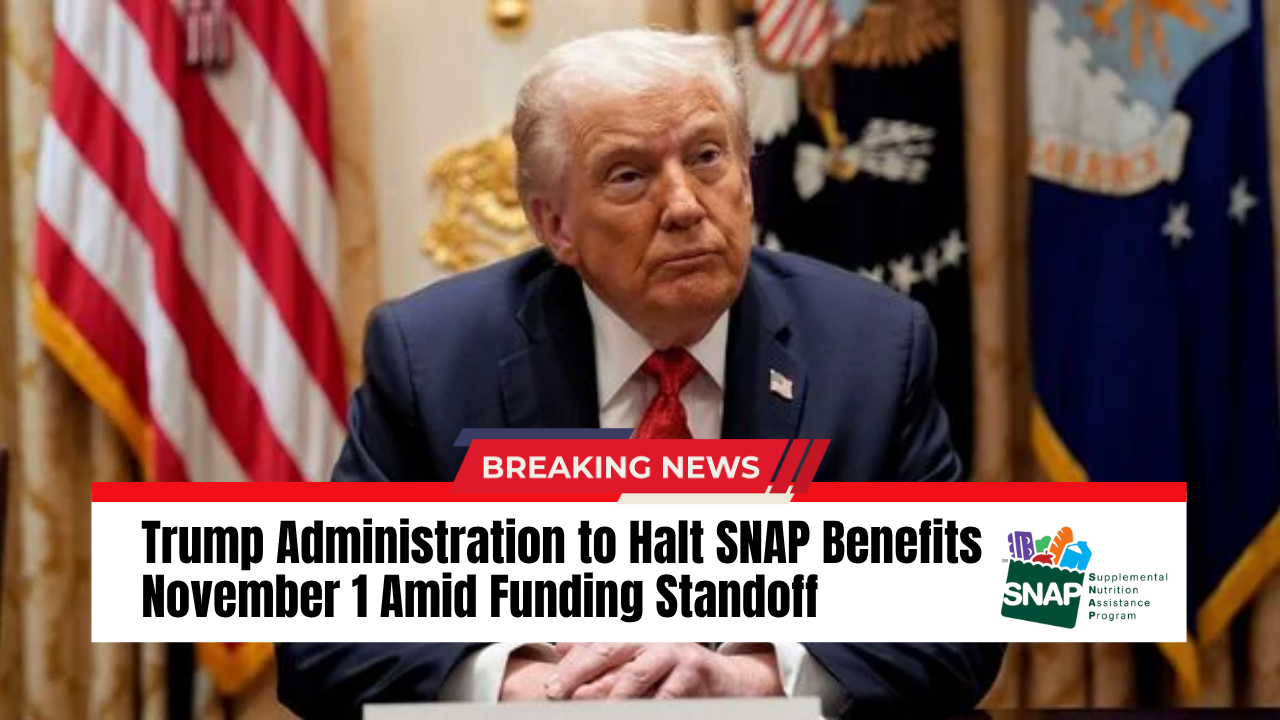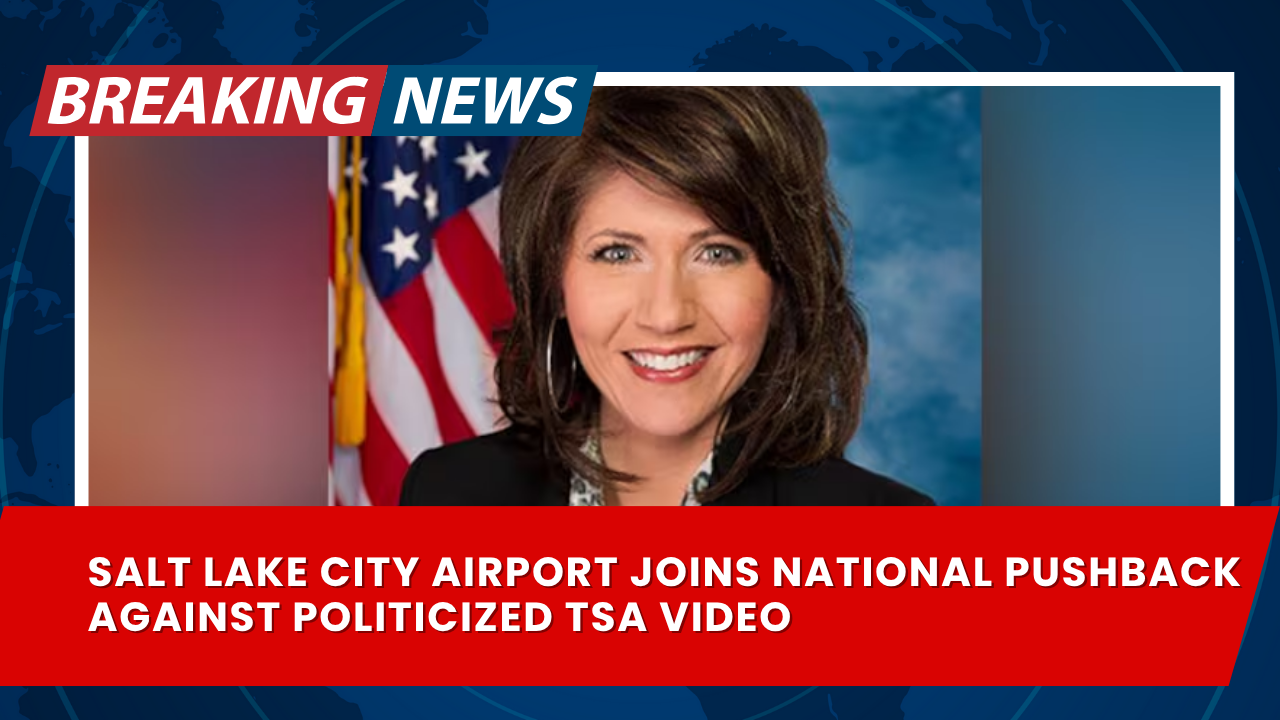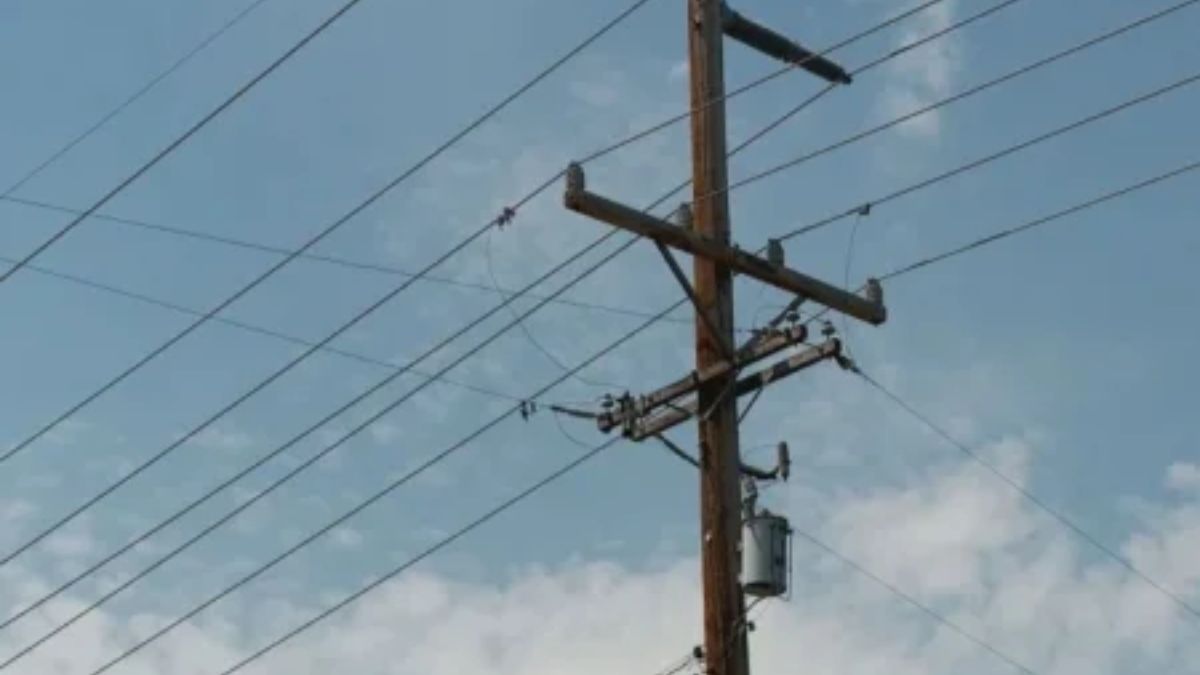The Trump administration has announced plans to halt funding for SNAP benefits beginning November 1, 2025, if Congress fails to approve a new federal budget. The U.S. Department of Agriculture (USDA) confirmed that it will not use its $5 billion contingency fund to continue payments under the Supplemental Nutrition Assistance Program (SNAP) amid the ongoing government shutdown.
This means roughly 42 million Americans—including children, seniors, and low-income workers—could lose access to monthly grocery benefits if no resolution is reached before the start of November. SNAP is the nation’s largest federal food-assistance program, designed to help low-income households afford healthy meals.
Why SNAP Funding Is Stopping in November
According to an internal memo shared by the USDA and obtained by multiple outlets, the Trump administration has determined that the contingency fund cannot legally be used to pay monthly benefits once Congress has failed to appropriate funds. That fund, typically reserved for emergencies like hurricanes or wildfires, is insufficient to cover a full month’s worth of payments.
The Supplemental Nutrition Assistance Program costs approximately $9 billion per month, nearly double the remaining reserve. As a result, the USDA stated that it would suspend November payments if appropriations are not renewed.
| Key Metric | Amount / Estimate |
|---|---|
| Total SNAP beneficiaries | ~42 million Americans |
| Monthly program cost | $9 billion |
| Remaining contingency fund | $5 billion |
| Possible benefit halt date | November 1, 2025 |
The agency’s notice comes as part of the broader federal government shutdown, which began on October 1 after budget negotiations between the White House and Congress collapsed.
State agencies have been directed to inform recipients that unless new funding is approved, SNAP EBT cards will not be reloaded in November. The USDA clarified that it will continue to provide minimal administrative support to states but cannot legally issue benefits without congressional authorization.
Several state governments—including California, New York, and Virginia—are exploring short-term relief options, such as advancing state funds to bridge the gap. However, federal reimbursement is not guaranteed if the shutdown extends.
What the Halt Means for Families and the Economy
The potential suspension of SNAP benefits would have far-reaching consequences for both households and the national economy. SNAP helps feed one in eight Americans and contributes nearly $1.50 in economic activity for every dollar distributed, according to the U.S. Bureau of Economic Analysis.
Economists warn that cutting off funding could reduce consumer spending by billions of dollars in November alone, particularly in rural and low-income communities that depend heavily on SNAP transactions at local grocery stores and farmers’ markets.
Food banks and community organizations, such as Feeding America, are preparing for a surge in demand. Many of these nonprofits already face strain from inflation and higher food costs.
The National Governors Association issued a bipartisan statement urging the administration to reconsider using the contingency fund or find an interim solution until Congress passes a spending bill. Some governors have threatened legal action, arguing that withholding authorized benefits during a shutdown violates federal law.
Meanwhile, anti-hunger advocates emphasize that SNAP is a lifeline, not an optional program. The Center on Budget and Policy Priorities estimates that over 20 million children could be directly affected if benefits are delayed.
Political and Legal Fallout
The funding freeze has quickly become a political flashpoint in Washington. The U.S. Senate Committee on Agriculture, Nutrition, and Forestry—which oversees SNAP—called the move “a manufactured crisis that endangers the most vulnerable.” Lawmakers on both sides are urging a short-term continuing resolution to fund the program while negotiations continue.
The Trump administration, however, maintains that its decision follows existing law. Officials argue that previous administrations used the contingency fund only in emergencies and that diverting it to regular payments could jeopardize other food programs such as the National School Lunch Program and Women, Infants, and Children (WIC) nutrition benefits.
The Office of Management and Budget (OMB) is reportedly reviewing options for limited administrative spending but says no broad funding can occur without legislative approval.
If Congress does not act by early November, the suspension could extend into December—potentially becoming the most significant interruption in SNAP history since its creation in 1964.
What SNAP Recipients Should Do Now
State social service departments are advising recipients to:
- Check their state SNAP portal or hotline regularly for updates.
- Plan ahead by purchasing non-perishable foods while current benefits remain active.
- Seek assistance from local food banks, community kitchens, and faith-based organizations if needed.
- Avoid scams or false social media claims about “emergency reloads” or “special November payments.”
The USDA reiterated that it will issue official updates via Food and Nutrition Service (FNS) channels only. Recipients can also track federal policy changes through the Federal Register.
As the Trump administration stands firm on halting SNAP benefits funding beginning November 1, millions of low-income Americans face the threat of losing critical food assistance. Without a budget agreement, the USDA says it cannot legally disburse benefits from its contingency fund.
While negotiations in Congress may yet produce a short-term solution, families should prepare for disruptions in their monthly aid. The ongoing standoff highlights the vulnerability of federal nutrition programs during political gridlock—and the urgency for swift legislative action to restore funding and protect those most in need.



